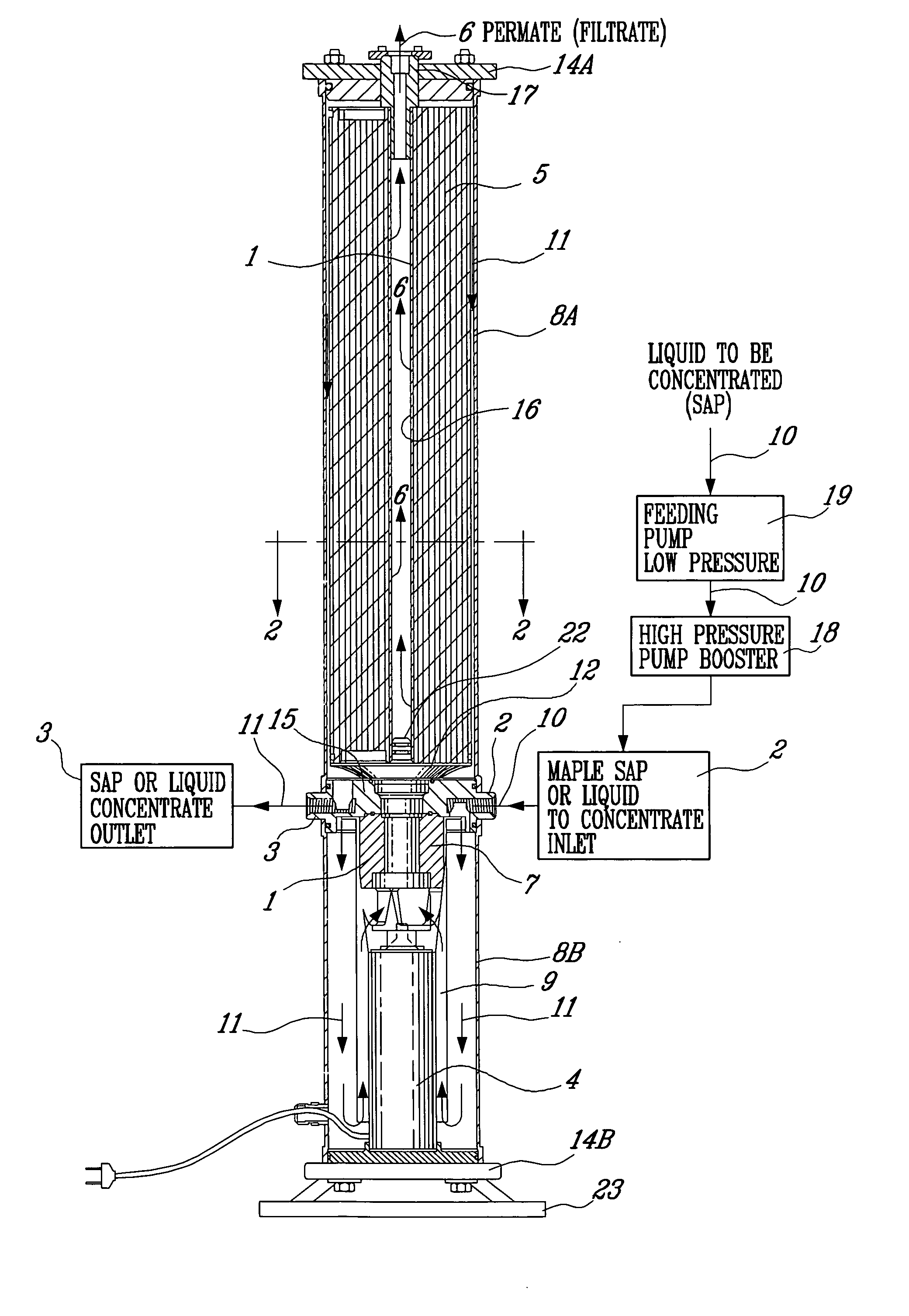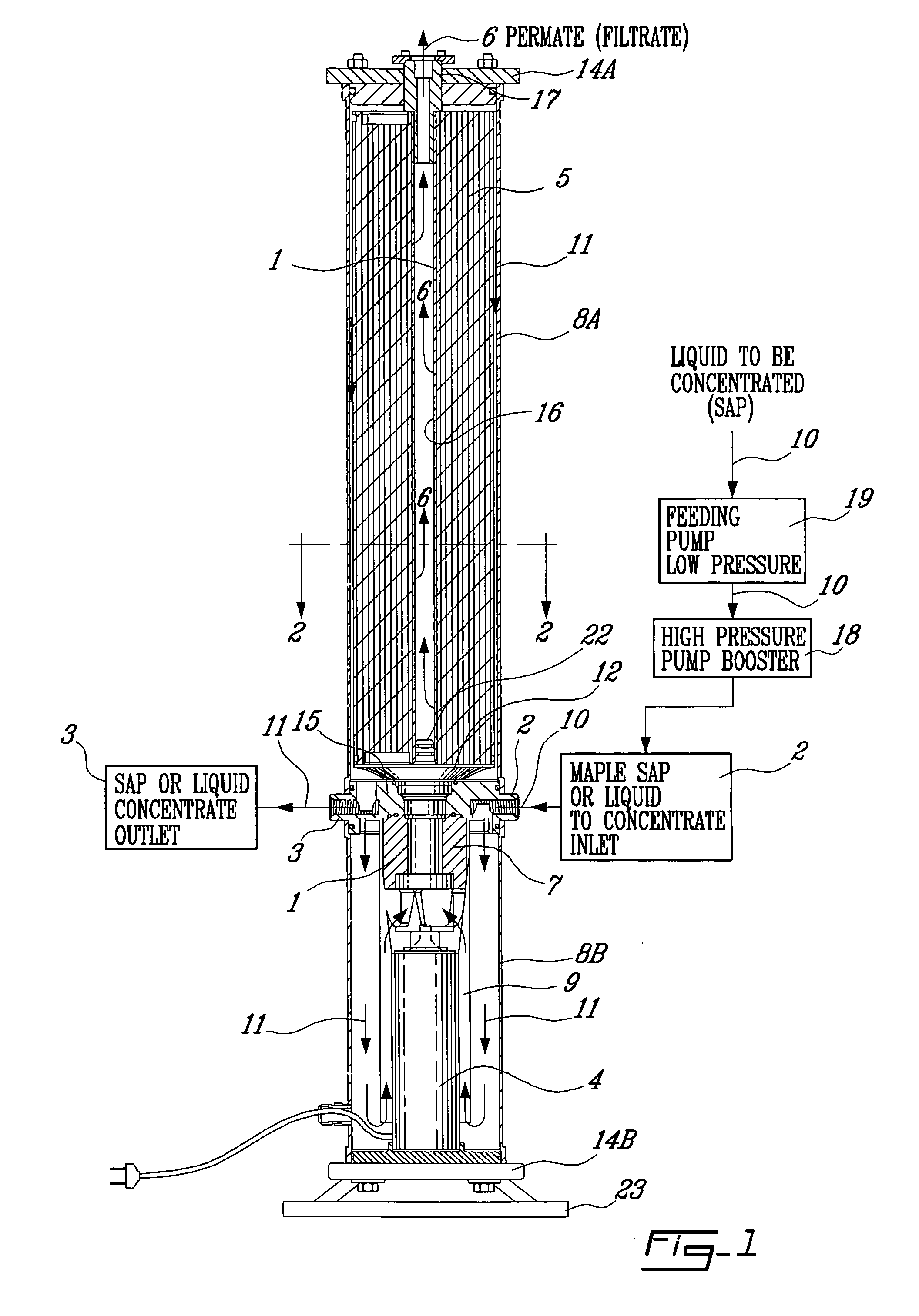Liquid separation apparatus
a liquid separation and apparatus technology, applied in the direction of separation processes, membranes, piston pumps, etc., can solve the problems of difficult to reach locations of bacteria on the wire mesh support, and achieve the effect of reducing the number of bacteria
- Summary
- Abstract
- Description
- Claims
- Application Information
AI Technical Summary
Benefits of technology
Problems solved by technology
Method used
Image
Examples
Embodiment Construction
[0029] Referring to FIGS. 1 and 2, the liquid separation apparatus comprises a pair of watertight cylindrical vessels 8a and 8b which are closed at their opposite remote ends by caps 14a and 14b and at their common end by a dividing wall 15. A membrane 21 of synthetic fiber tissue is coiled onto a wire mesh grid 20 in vessel 8a. A pump 1 and its electric motor 4 are enclosed in vessel 8b. The motor 4 rotates the rotor 7 of the circulating pump 1. A feeding pump 19 of low pressure serves to inject liquid to be concentrated at the input of a high pressure booster pump 18 which, in turn, serves to maintain the pressure at an adequate value in vessels 8a and 8b in order to accelerate the reverse osmosis effect through the layers 5 of the membrane 21. A saucer plate 12 having an inverted cone shape and resting in liquid tight arrangement on the dividing wall 15 supports the membrane. The plate 12 has a central opening (not shown) in fluid communication with the upper end of the pump, thu...
PUM
 Login to View More
Login to View More Abstract
Description
Claims
Application Information
 Login to View More
Login to View More - R&D
- Intellectual Property
- Life Sciences
- Materials
- Tech Scout
- Unparalleled Data Quality
- Higher Quality Content
- 60% Fewer Hallucinations
Browse by: Latest US Patents, China's latest patents, Technical Efficacy Thesaurus, Application Domain, Technology Topic, Popular Technical Reports.
© 2025 PatSnap. All rights reserved.Legal|Privacy policy|Modern Slavery Act Transparency Statement|Sitemap|About US| Contact US: help@patsnap.com



